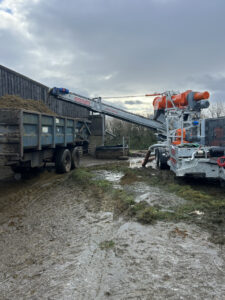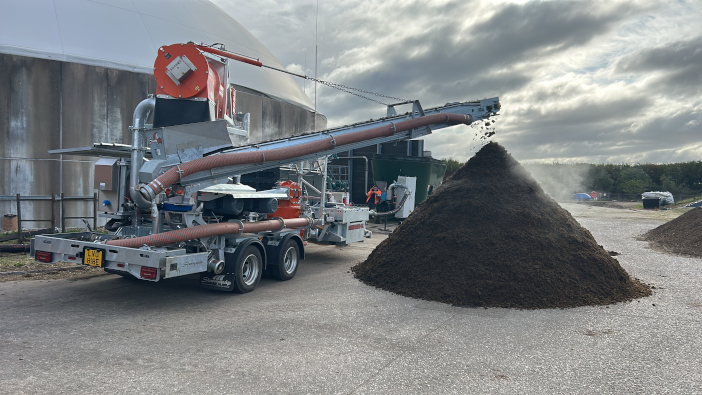Having specialised in slurry applications, Martin Hays Contracting has taken the significant step to add slurry separation to the list of operations
A key part of Martin Hays’ contracting business has always been slurry spreading. When he won Contractor of the Year in 2024, he explained that one of the first major investments the business made was in an umbilical spreading system in 1996. Now, he has significantly upgraded the system with the purchase of a Börger RC150 separator, mounted on a fully galvanised trailer chassis for easy transport.
“As farms have tried to maximise their storage capacity by limiting the amount of rainwater that enters the lagoon, we found that it was more difficult to efficiently pump slurry to the applicator,” he says. “Over the last few years, we’d had to turn away spreading work on some farms because the slurry was too thick.”
The hope was that purchasing a separator would bring back some of this work, as well as increase the level of winter work for the business. After researching the machinery available, Martin opted for the Börger due to its high output of up to 150cu m/hr, which would make it possible to separate and pump to a nurse tank, while simultaneously spreading with the umbilical system.
Martin travelled to a Scottish contractor to see the machine working before the purchase and was impressed by the unit. He then finalised the deal with local dealer Callum Hughes Machinery and the importer Slurryquip. “We’ve known Callum for a while, and he used to be a contractor himself, so he understands what his customers are looking for.”
 Rapid separation
Rapid separation
The RC150 runs automatically, with a 6in input that runs the slurry through a macerator. The slurry is then pressed through a wire frame by an auger, which collects the dry matter and shifts it to an additional press channel, which removes any remaining moisture.
The resulting dry matter can be dropped on the floor beneath the separator to be collected later, or the whole unit can be lifted to deposit the dry matter into a trailer. Slurry can be deposited back into the lagoon via an outgoing pump or into a nurse tank.
“It’s quick and easy to set up because of the integral pumps, and we can lift the slurry directly out of the lagoon, or from under slats in the cattle sheds,” Martin explains. “The control panel is simple to use, and because it will operate automatically with pressure sensors at the inlet and outlet, we can focus on the logistics around the machine.”
He notes that it does need a certain amount of dry matter to work efficiently, which shouldn’t be a problem given the increasing thickness of the slurry in his area. Martin also explains that it will take a little time for farmers to recognise the benefits.
“It isn’t necessarily about creating more space in the lagoon to maintain the six months of storage, although it will help in that regard,” he says. “This is about maximising the nutrient value of the slurry and reducing the cost of spreading.
“The Börger wasn’t a cheap machine, and so we need to charge accordingly, but for those doing multi-cut silage, the more potent liquor will boost regrowth and be far easier for us to spread. Especially if we can come on-farm a few times a year to keep the lagoon homogenous.”
The leftover dry matter can also be utilised. Martin’s son, Dan, notes that it spreads like compost and can condition the soil, improving the structure and promoting growth. Both say that they are aware of farmers using treated dry matter as cattle bedding, but have not pursued this as yet.
“It needs to have the right moisture content, and needs to be treated,” Martin says. “If it’s not right, it can lead to some health problems, including mastitis.”
Adding diversification
While the unit was purchased to ease slurry spreading on farm, it has quickly led to additional work. Slurryquip recommended Martin to an anaerobic digestion plant in Norwich, and he spent a week there emptying and separating the digestate tank.
“It’s something else that we can offer; either as a full slurry service to local farms, or as a single operation,” Martin notes. “There isn’t another unit like this in the area, so we can work with other contractors if they are having the same issues with thick slurry, as well as travel further afield to work with digesters.”


